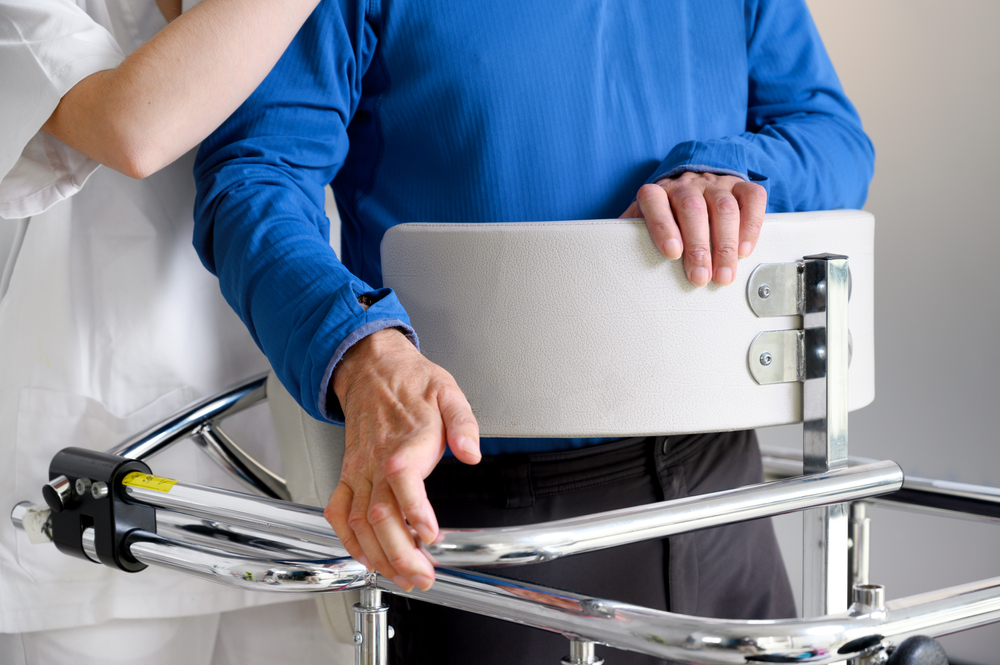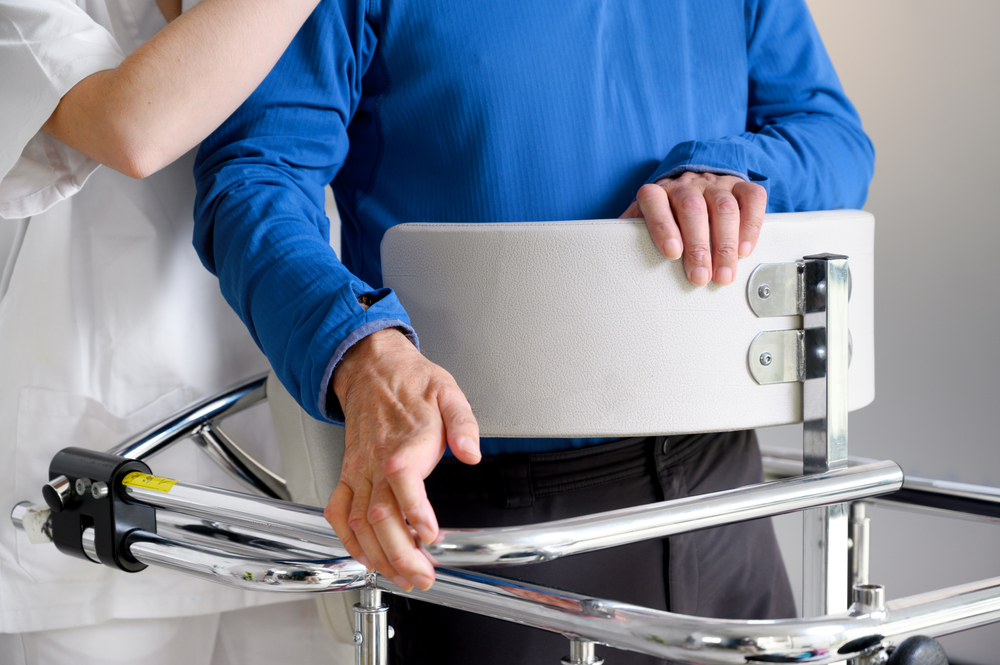ALS Support: How to Care for Someone with ALS
Category:

You likely remember hearing about ALS (Amyotrophic Lateral Sclerosis) recently when the Ice Bucket Challenge went viral in 2014. With this challenge, participants filmed themselves dumping a bucket of ice water on their heads and nominated others to either do the same or donate to ALS research. Participants raised $115 million for the cause and professionals achieved significant research advancements since then. This includes the discovery of the NEK1 gene, which is now one of 30 genes known to be associated with ALS.
ALS, not to be confused with Motor Neuron Disease (MND), is also known as Lou Gehrig’s disease. This illness leads to failure in the muscles that control chewing, swallowing, and speech. Eventually, it weakens the muscles that control your arms and legs and help hold your body upright. Finally, it affects the muscles that help you breathe on your own to the point where you will need mechanical support.
In this post, we will review the following topics on ALS care:
- At what age does ALS start?
- How long does it take ALS to progress?
- ALS in older patients
- ALS home modifications
- Taking care of someone with ALS
At What Age Does ALS Start?
ALS usually occurs between ages 40 and 60 and tends to begin in the hands, feet, and ankles. An early symptom is a “foot drop,” or difficulty lifting the front part of the foot and toes. Other early signs include clumsiness, muscle cramps, slurred speech, trouble swallowing, and twitching in the arms, shoulders, and tongue. Eventually, those with ALS are unable to chew, swallow, speak, and breathe without help from medical devices.
How Long Does it Take ALS to Progress?
However, ALS does not begin abruptly. It takes between nine and 12 months for one to receive an ALS diagnosis from the time they begin experiencing symptoms. This is because there is, unfortunately, no blood test for the disease, but scientists are working hard to develop one. This will not only speed up the diagnosis but also help professionals monitor the course of the disease and work on treatments. It is important to seek out a proper evaluation as soon as possible so you can start taking Rilutek, which has been shown to delay the disease’s progression.
According to the ALS Association, the average survival time for ALS is three years. About 20% will survive for five years. About 10% will live for 10 years. And 5% will survive 20 years or longer. An exact life expectancy cannot always be determined.
A notable example of someone who lived a long time with ALS is scientist Stephen Hawking. He received his ALS diagnosis in 1963 and was only supposed to live for a few more years. However, he went on to complete his doctorate in 1966, discovered that black holes can emit radiation in 1977, became Lucasian professor of mathematics at Cambridge in 1979, and published his book A Brief History of Time: From the Big Bang to Black Holes in 1988. He died of natural causes on March 14th, 2018, about 25 years after his diagnosis.
Furthermore, ALS does not mean you can’t still achieve great things. In addition to Hawking, other notable public figures with ALS include musician Jason Becker and, of course, ALS’s namesake, baseball player Lou Gehrig.
ALS in Older Patients
Elderly patients usually experience ALS in four stages:
- Beginning Stage
- May be isolated to a single group of muscles
- Muscles may appear smaller or weaker
- More fatigued than usual
- Middle Stage
- Muscles stiffen, contract, and become paralyzed
- Joints become rigid and deformed
- Dry mouth and trouble swallowing
- Emotional dysregulation, such as bursts of laughter and tears for no reason
- Late Stage
- Nearly all muscles, including those in the lungs, become paralyzed
- Headaches and dizziness
- Inability to speak or eat without intravenous methods
- Help from hospice care for ALS patients
- End-Stage
- Preparations for ALS end-of-life care
- Failure of the cardiac system or respiratory system
- Swelling of passageways that cause choking
ALS Home Modifications
When it comes to ALS home health care, it is important to adapt your home for safety. The ALS Association identified several common needs to address in your planning:
- Getting in and out of the house
- Once a wheelchair becomes necessary, you may want to consider installing a ramp. One inch of rise should equal a minimum of one foot of ramp. It must include solid surfaces at the top and bottom, railings on both sides, and 36-inch width. If the railing is longer than 30 feet, a landing at the midpoint is also required.
- If your entryway cannot accommodate these ramp requirements, consider other options, such as wheelchair lifts.
- Moving throughout the house
- Multi-story houses: Consider modifying your first floor so the individual does not have to go upstairs at all, or if your budget allows, use a stairlift system or install an elevator or platform lift.
- Doorways: You must have at least 32 inches of clearance for a wheelchair to pass through. Consider replacing door hinges with swing-clear hinges or removing the door and trim entirely.
- Hallways: There must be at least 36 inches of wheelchair clearance.
- Turning areas: For U-turns, you need a turning circle of clear space that is at least five feet in diameter. For T-turns, you need at least three feet of clear space in each direction of the T.
- Shower and toilet access
- Sliding bath transfer system: It can be used as a transfer bench to access the bathtub, a roll-in shower chair, or an over-the-toilet commode.
- Grab bars: Install them near the toilet, shower stall, and bathtub to increase stability.
Medicare will cover costs for basic medical equipment, but most costs for home modifications and accessibility equipment must be paid out of pocket. A financial planner can provide you with some necessary assistance. If finances are a barrier for you, try looking into grant or loan programs. Additionally, keep your tax professional in the loop about these expenses so they can be deducted on your tax return.
Now that we know how to keep your home safe, let’s review how to care for someone with ALS.
Taking Care of Someone With ALS
In addition to home modification, your ALS care plan should include other assistive devices for eating, sleeping, and speaking. The latter can be adapted for hand or eye use to ensure improved quality of life. Furthermore, you should seek out support from others, including:
- Neurologist
- Physical therapist
- Speech and swallow therapist
- Nutritionist
- Respiratory therapist
No matter how much you love your family member, caring for them can still take a physical and emotional toll on you. This is especially the case if you’re experiencing depression and anxiety. You know how when you’re on a plane and a flight attendant instructs you to put your own oxygen mask on before you assist others? You should practice that same method for your mental health. Consider seeking out respite care for extra assistance. Taking care of yourself will only make you a better caregiver.
Summary
If your loved one is experiencing early signs of ALS, speak to a medical professional immediately to acquire a diagnosis. Awareness is the most important step so you can begin proper treatment and care. For more information on ALS support, refer to the sources below.
Subscribe
Date: 2020-05-05
Category:


